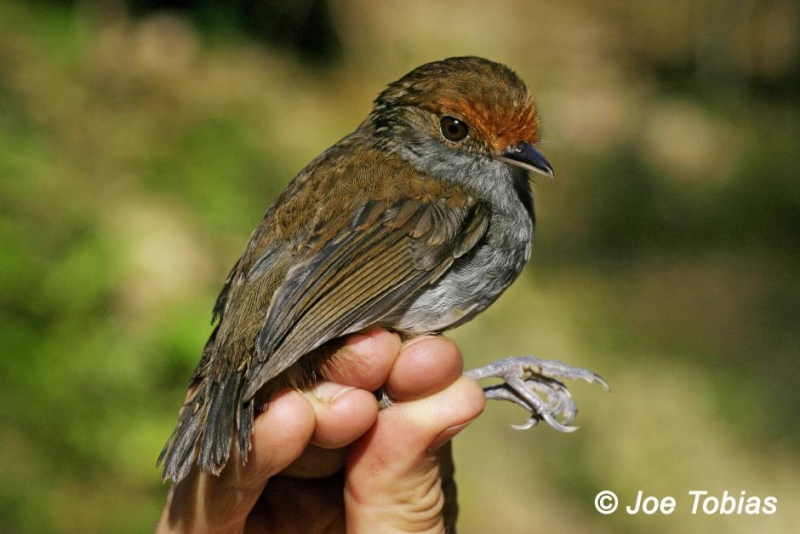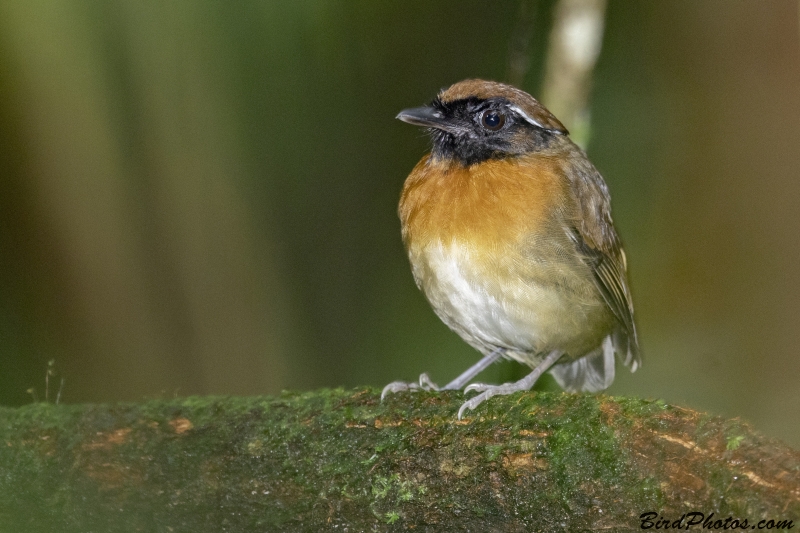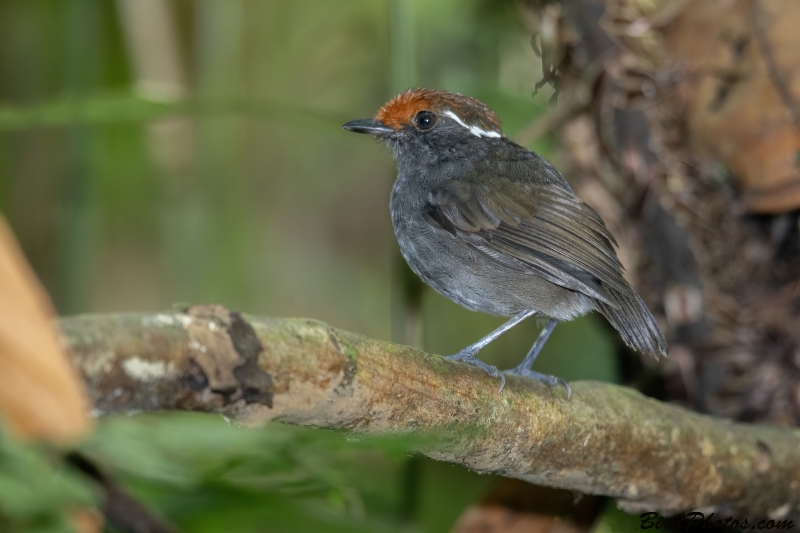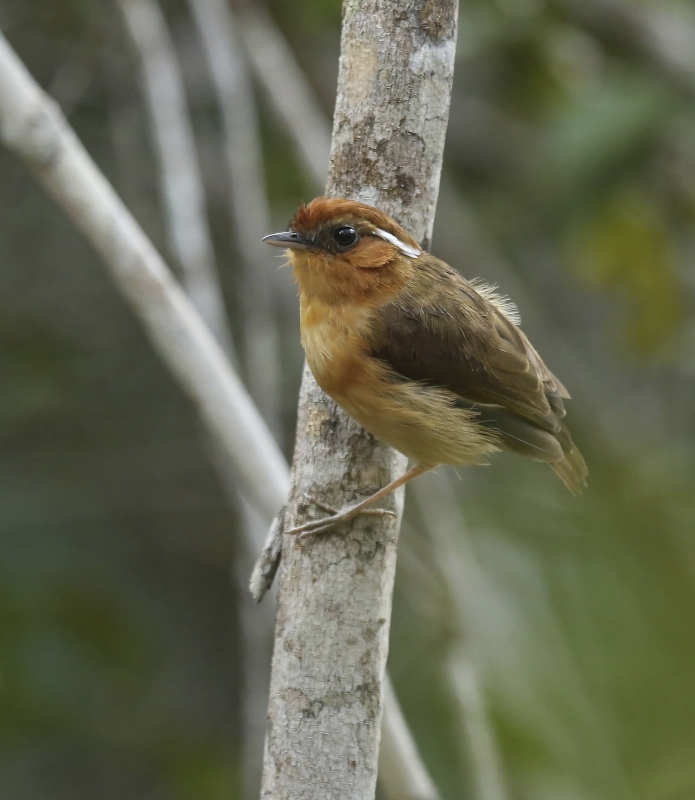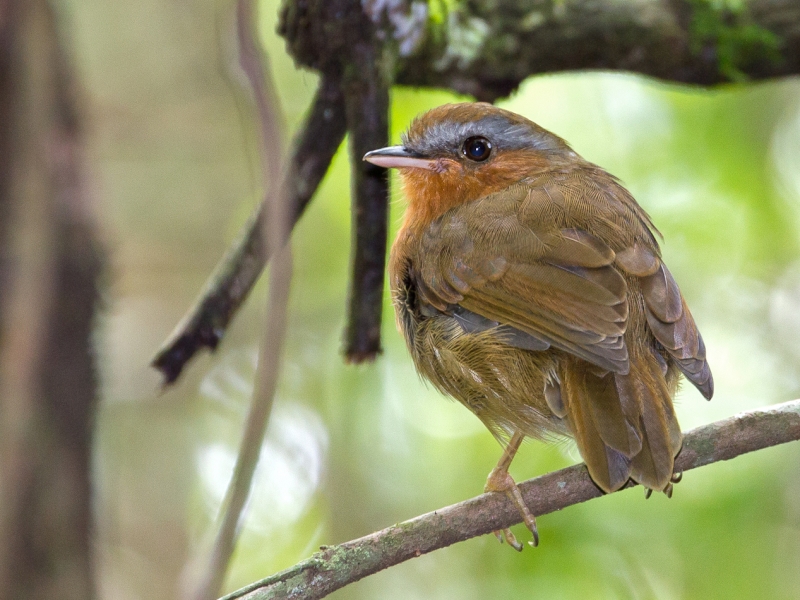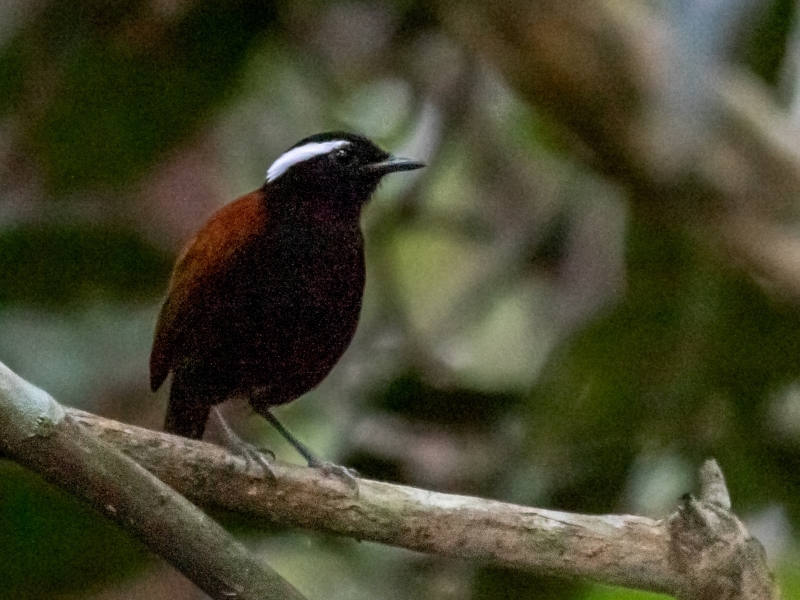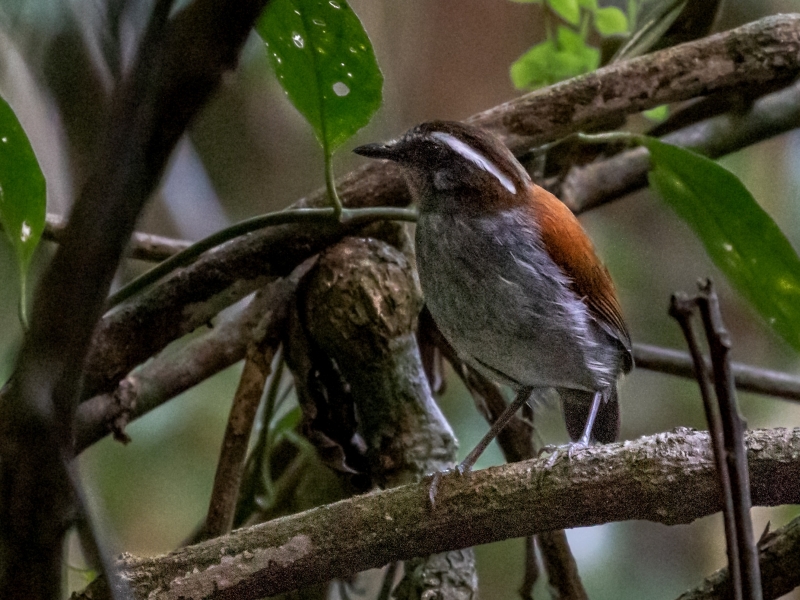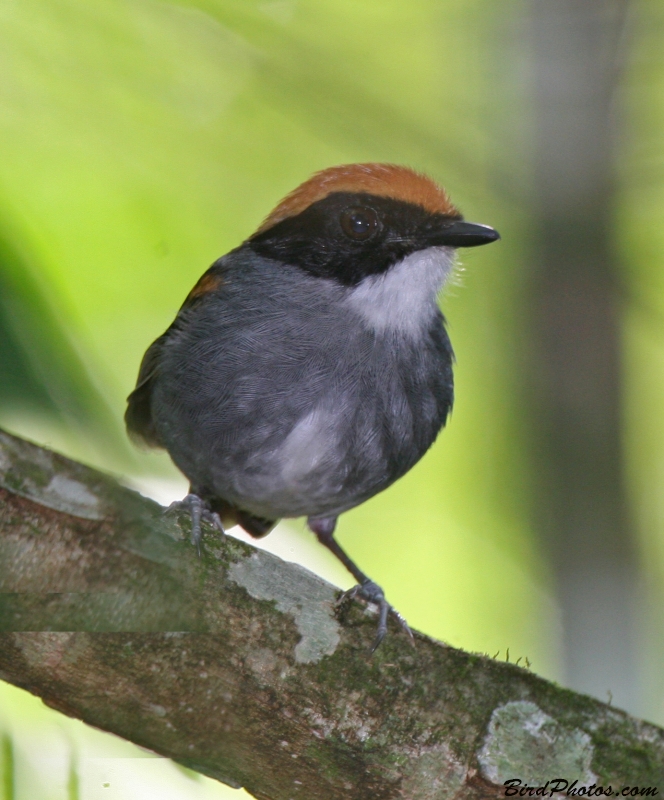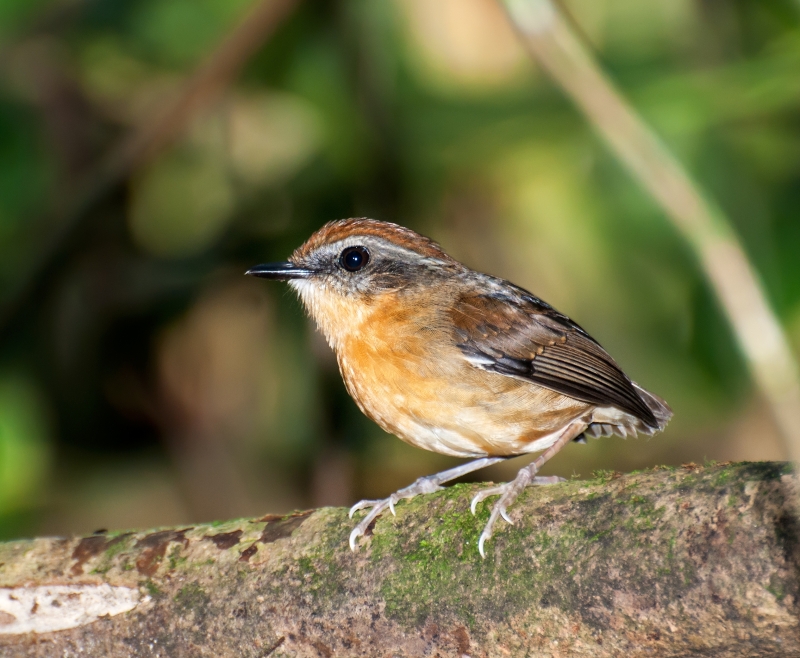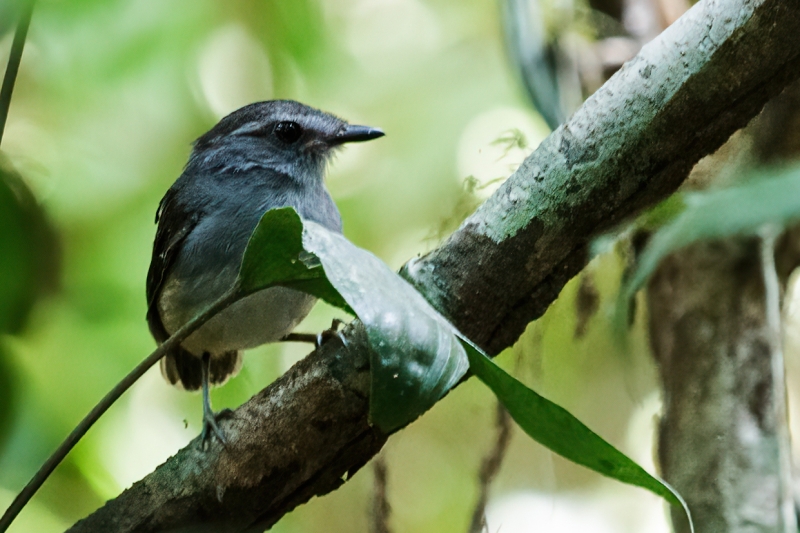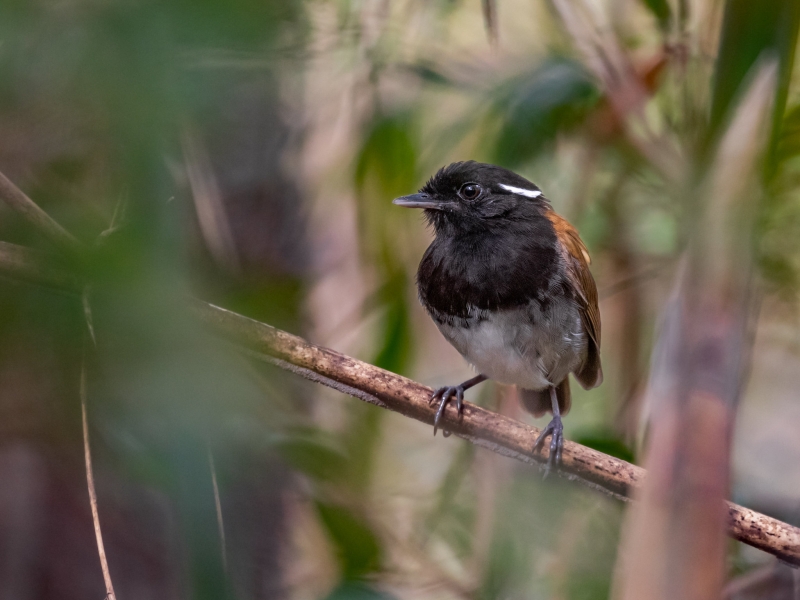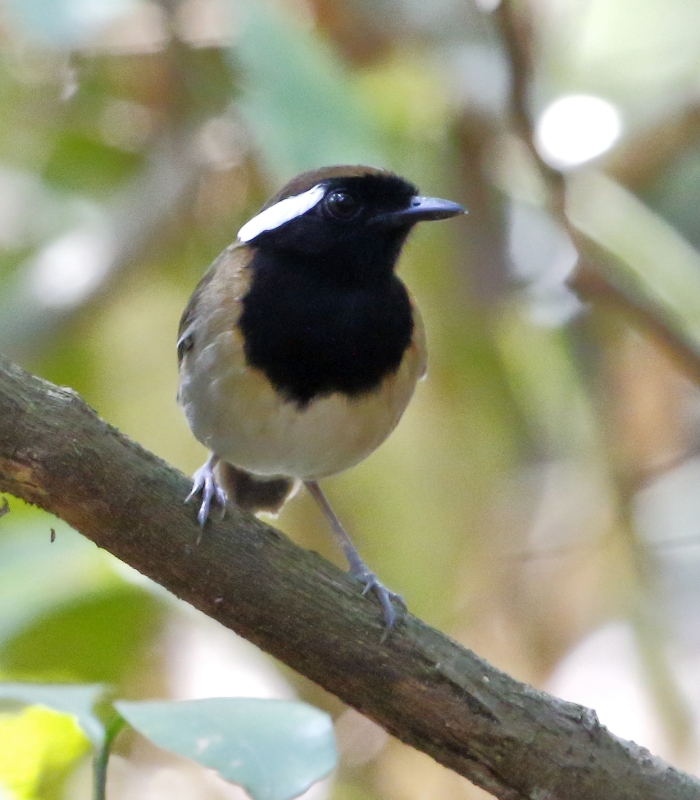Individuals range from dark grey to almost black, and to more brown/rufous (see photo). Apparently the taxonomy is still in flux (HBW). | ||||||
Stays close to the ground. Female does not have black face. | ||||||
| ||||||
| ||||||
| ||||||
Male black, female grey, both with rufous back. Both have white 'postocular tuft' similar to some other gnateaters but more pronounced (HBW). | ||||||||||||
| ||||||||||||
| ||||||
| ||||||
Stays close to the ground. Split (2023) from the Chestnut-belted Gnateater because of obvious differences in plumage, vocalization, and DNA. Ranges appear to overlap; this species is only found in the center of the Brazil Amazon below the Amazon river. | ||||||
